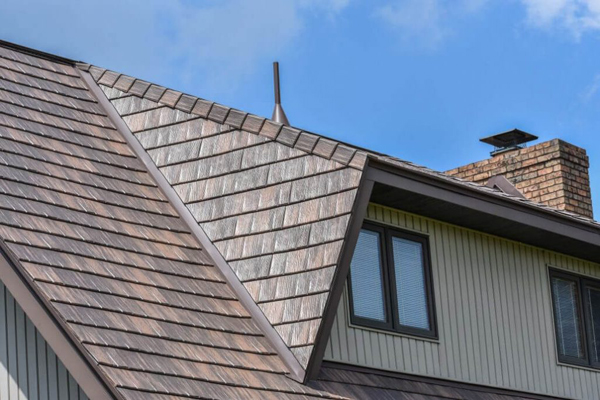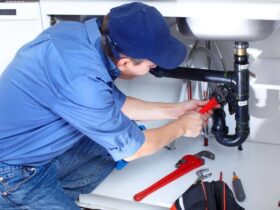When it comes to selecting the right roofing system for a flat or low-slope roof, two of the most reliable and time-tested options are EPDM roofing and built-up roofing (BUR). Both systems have been widely used in commercial and residential roofing for decades, and each offers unique advantages depending on the specific needs of the property. In this post, we’ll break down the key differences between EPDM and built-up roofing systems, compare their pros and cons, and help you determine which solution is the better fit for your next roofing project.
Understanding the Basics
What Is EPDM Roofing?
EPDM (ethylene propylene diene monomer) is a durable synthetic rubber membrane commonly used in low-slope roofing systems. Available in black or white and in large rolls, epdm roofing PA is known for its flexibility, weather resistance, and ease of installation. It can be installed using adhesive, mechanical fasteners, or ballasted with stone.
What Is Built-Up Roofing (BUR)?
Built-up roofing is one of the oldest roofing systems still in use today. Often referred to as “tar and gravel” roofing, BUR consists of multiple layers (plies) of bitumen alternated with reinforcing fabrics. The system is finished with a layer of gravel or a reflective coating for added protection and durability.
Installation and Maintenance
EPDM Installation
EPDM is a relatively lightweight material, making it easier and faster to install compared to BUR. The single-ply system means fewer seams, and because it comes in large sheets, installation is less labor-intensive. Most EPDM roofs can be installed in just a couple of days, depending on the size of the roof.
BUR Installation
Installing a BUR system is more complex and time-consuming. The process involves applying multiple layers of felt or fabric, each set in hot asphalt or cold adhesive. It often requires specialized equipment and experienced installers. While more labor-intensive, the result is a very rugged and long-lasting surface.
Maintenance Needs
EPDM roofs are low maintenance but can be punctured by sharp objects or heavy foot traffic. Regular inspections and minor repairs can prolong the life of the system. BUR, due to its layered nature, is highly resistant to punctures and offers strong protection, but any leaks that do occur can be harder to detect and repair.
Durability and Longevity
EPDM Longevity
A properly installed EPDM roof can last 25 to 30 years. It stands up well against UV rays, ozone, and extreme temperatures. Its rubbery flexibility makes it an excellent choice in areas with frequent temperature fluctuations.
BUR Longevity
Built-up roofs have a lifespan of 20 to 30 years or more, depending on the materials used and the number of layers applied. Because of its multi-layered construction, BUR offers excellent resistance to water and weather, making it a trusted choice for high-traffic commercial roofs.
Cost Comparison
EPDM Roofing Costs
EPDM is typically more affordable upfront, both in terms of materials and labor. The lightweight rolls reduce transportation costs, and the relatively straightforward installation process can cut down on labor time.
BUR Roofing Costs
BUR tends to be more expensive due to the labor-intensive installation and the amount of material required. However, its durability and performance can make it a cost-effective investment over time, particularly for large commercial buildings.
Environmental and Energy Efficiency
EPDM’s Energy Efficiency
White EPDM membranes offer reflective properties that can help reduce cooling costs in warm climates. While not as reflective as some other options, white EPDM still contributes to energy savings and is considered an eco-friendly material due to its recyclability.
BUR’s Energy Efficiency
BUR systems finished with a reflective coating can also help reduce heat absorption, lowering energy bills. The gravel top layer can provide additional thermal insulation, making it effective in both hot and cold climates.
When to Choose EPDM vs. BUR
Choose EPDM if:
- You need a fast, cost-effective roofing solution
- Your building is in a region with extreme weather or frequent freeze-thaw cycles
- You want a lightweight, flexible roofing system
- Your roof has minimal foot traffic
Choose BUR if:
- You’re looking for a rugged, time-tested system with excellent resistance to water intrusion
- Your building has high foot traffic or houses heavy rooftop equipment
- You’re investing in long-term durability over initial cost
- You prefer a roofing system with natural fire resistance
Final Thoughts
When it comes to selecting the right flat roofing system, both EPDM and built-up roofing offer dependable, long-lasting protection. Your choice should ultimately depend on your budget, project timeline, building use, and long-term performance goals.
At the end of the day, partnering with a professional commercial roofing contractor who understands the pros and cons of each system is the best way to ensure a successful installation. Whether you’re planning a new build or replacing an aging roof, consider your priorities and get expert guidance to make the best decision for your property.





